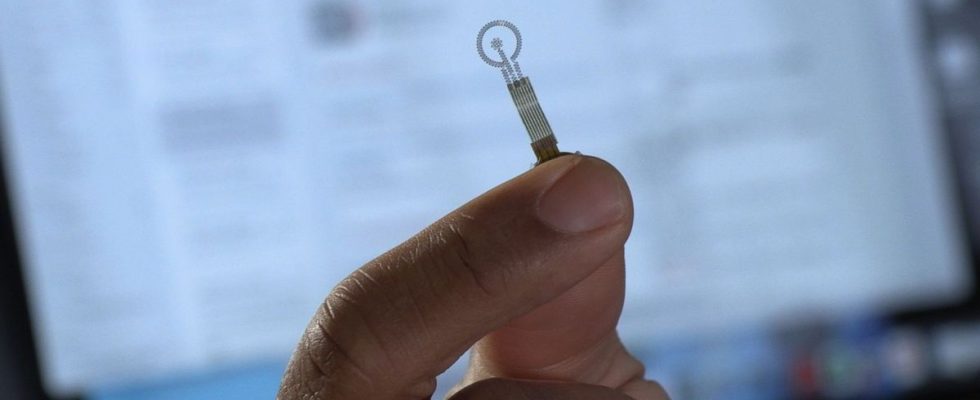Published on
Updated
Reading 2 mins.
American researchers at Northwestern University in Illinois have developed a small flexible dressing, which accelerates healing by electrotherapy directly applied to the wound. Once healing is complete, this fully biodegradable connected dressing is absorbed by the body.
This first electronic dressing would accelerate healing by nearly 30%. This is at least what emerges from the first tests carried out on mice. The bandage also monitors the healing process, even alerting clinicians in real time, via a dedicated mobile app.
In the present case, this electrotherapy system has been miniaturized to the maximum. It includes two electrodes: one, flower-shaped, which is placed just above the wound bed, and the other, ring-shaped, which is positioned on the healthy tissue that surrounds it. The rest of the device contains in particular various sensors as well as a contactless communication system (NFC) to transmit the data necessary for monitoring healing.
Here, wounds are healed through electrical stimulation that restores the body’s normal signals, prompting new cells to migrate to the wound bed. From a distance, the doctor can decide when to apply electrical stimulation and monitor healing progress.
Normally, the healing process causes a gradual decrease in the current measurement. If it remains high, there is a problem and the doctors will be able to see it instantly. When the operation is complete, the part of the dressing in contact with the wound will have completely dissolved. All of its components, including electronics, are absorbed by the body in a completely harmless way.
In the future, this type of device could prove particularly useful for diabetics, whose infections can be difficult to treat, or even dangerous in the event of complications. But, for the moment, the researchers prefer to continue testing their discovery on animals, before taking the plunge towards humans. Their work has already been published in the journal Science Advances.
It should be noted that several programs moving in the direction of future connected dressings and bandages are currently in the development phase. This is, for example, the case of work carried out at the Free University of Brussels (ULB) and sponsored by the North Atlantic Treaty Organization (NATO) which has enabled the development ofa new type of patch equipped with sensorscapable of transmitting information such as temperature, level of hydration or acidity (pH) of an injury.
